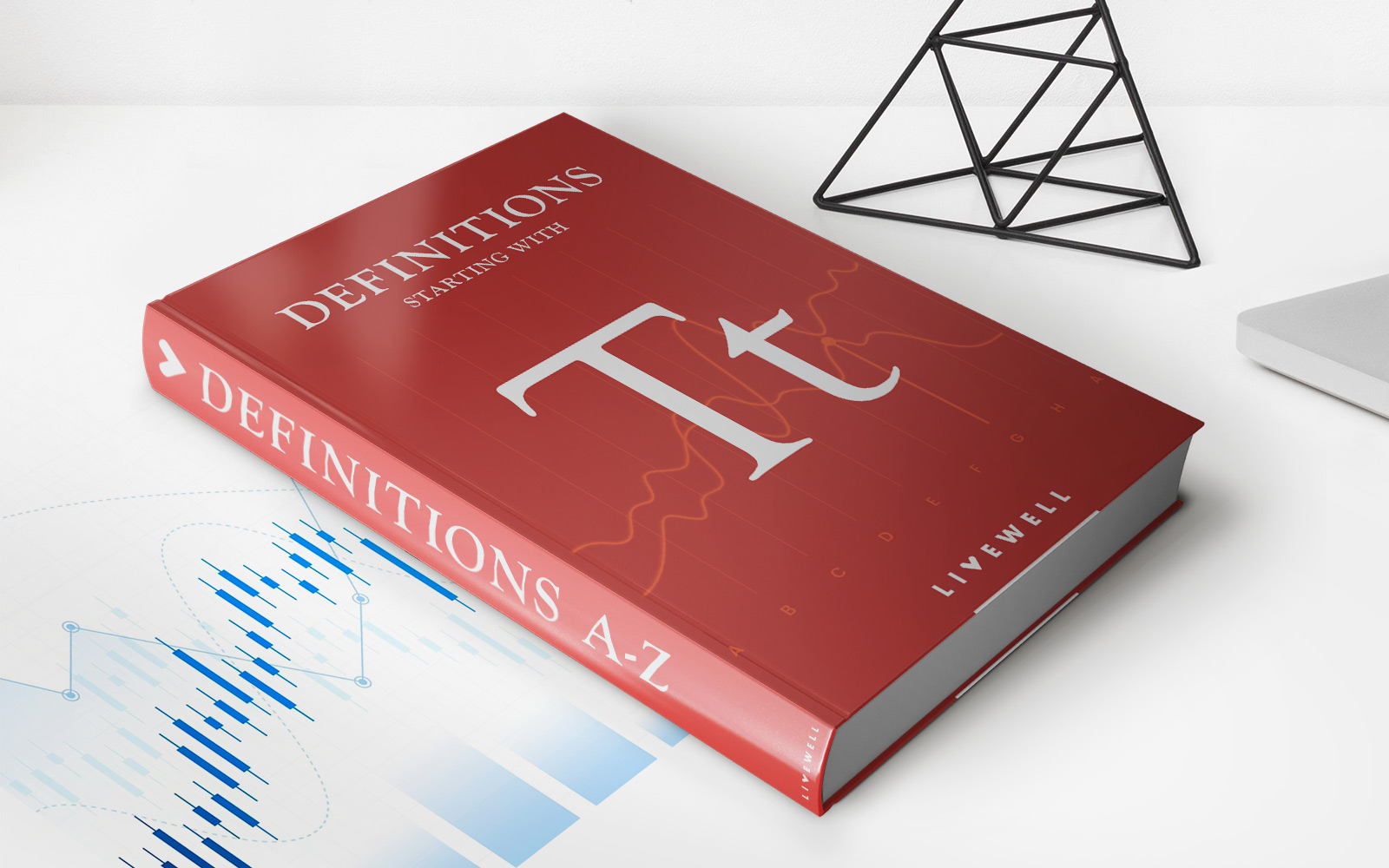

Finance
What Is The Optimal Capital Structure Formula?
Modified: December 30, 2023
Learn the optimal capital structure formula in finance to maximize profitability and minimize risk. Find out how to balance debt and equity for your business.
(Many of the links in this article redirect to a specific reviewed product. Your purchase of these products through affiliate links helps to generate commission for LiveWell, at no extra cost. Learn more)
Table of Contents
- Introduction
- Understanding Capital Structure
- Importance of Optimal Capital Structure
- Factors Influencing Capital Structure
- Aspects of the Optimal Capital Structure Formula
- Considerations for Determining Optimal Capital Structure
- Challenges of Achieving Optimal Capital Structure
- Case Studies on Optimal Capital Structure
- Conclusion
Introduction
Capital structure is an important concept in the world of finance that refers to how a company finances its operations and growth by utilizing different sources of funds. It involves the proportionate mix of debt and equity used to finance the assets of a business. Determining the optimal capital structure is a crucial decision for firms as it directly impacts their profitability, risk profile, and overall value.
The optimal capital structure formula represents the ideal proportion of debt and equity that maximizes a company’s value and minimizes its cost of capital. While there is no one-size-fits-all formula that can be applied universally, it depends on various factors such as industry dynamics, business risk, growth prospects, and financial goals.
Companies strive to achieve an optimal capital structure to strike a balance between risk and return. Too much debt can increase the firm’s financial risk and make it vulnerable to bankruptcy or default, whereas too much equity may dilute the ownership and reduce the returns for shareholders. By finding the optimal mix of debt and equity, companies can optimize their capital structure and improve their financial performance.
In this article, we will delve into the concept of capital structure and explore the significance of determining the optimal capital structure formula. We will also discuss the various factors that influence capital structure decisions and highlight the key aspects to consider when formulating an optimal capital structure. Additionally, we will address the challenges companies face in achieving the optimal capital structure and provide real-life case studies to illustrate its practical implications.
Ultimately, understanding and implementing the optimal capital structure is crucial for companies seeking to enhance their financial flexibility, manage risk, and maximize shareholder value. By striking the right balance between debt and equity, companies can position themselves for sustainable growth and profitability in an ever-changing business landscape.
Understanding Capital Structure
Capital structure refers to the way a company finances its operations and investments by utilizing a combination of debt and equity. It essentially represents the mix of long-term debt, preferred stock, and common equity that a company employs to fund its assets and support its ongoing activities.
Debt financing involves raising funds by borrowing money from external sources, such as banks, bondholders, or other financial institutions, with an agreement to repay the borrowed amount with interest over a specified period. Equity financing, on the other hand, involves raising funds by selling shares of ownership in the company to investors in exchange for capital.
The capital structure of a firm plays a significant role in determining its financial risk and return. It has a direct impact on the cost of capital, profitability, financial flexibility, and overall value of the company.
Companies have the flexibility to decide on the mix between debt and equity in their capital structure. This decision is influenced by various factors, including the industry in which the company operates, its stage of growth, the availability and cost of financing options, the company’s risk appetite, and the preferences of shareholders and lenders.
A company with a high proportion of debt in its capital structure is considered to have a higher financial leverage. This can amplify the returns for shareholders in good times but can also increase the risk of financial distress in periods of economic downturns.
On the other hand, a company with a higher proportion of equity has a lower financial leverage. This can provide more stability and a lower risk of bankruptcy but may result in lower returns for shareholders due to the dilution of ownership.
It is important to note that capital structure decisions are not static and are subject to change over time. As companies evolve, their capital requirements, opportunities, and risk appetite may transform, leading to adjustments in their capital structure to align with the changing landscape.
In the following sections, we will delve deeper into the importance of determining the optimal capital structure and explore the various factors that influence these decisions.
Importance of Optimal Capital Structure
Determining the optimal capital structure is crucial for companies as it has a profound impact on their financial performance, risk profile, and overall value. Achieving an optimal capital structure enables companies to strike a balance between maximizing shareholders’ wealth and minimizing the cost of capital.
Here are some key reasons why optimal capital structure is important:
- Optimizing Cost of Capital: The cost of capital is the rate of return required by investors to compensate them for the risk associated with investing in a company. By finding the optimal mix of debt and equity in the capital structure, companies can minimize the overall cost of capital. Debt is typically cheaper than equity as it comes with a fixed interest rate, making it a cost-effective source of funds. However, too much debt can increase the risk of financial distress, leading to higher borrowing costs. By striking the right balance, companies can optimize their cost of capital and enhance their profitability.
- Managing Risk: Optimal capital structure helps companies manage the risk associated with their financing decisions. A well-balanced mix of debt and equity can provide stability and flexibility in times of economic downturns. Companies with excessive debt may face challenges in meeting their debt obligations, leading to financial distress or bankruptcy. Conversely, companies with too much equity may miss out on leveraging their financial resources and maximizing returns for shareholders. By achieving an optimal capital structure, companies can mitigate financial risk and enhance their resilience in a dynamic business environment.
- Enhancing Financial Flexibility: An optimal capital structure enables companies to have greater financial flexibility. It allows them to access various sources of financing, both debt and equity, to fund their strategic initiatives. With a well-diversified capital structure, companies can adapt to changing market conditions, seize growth opportunities, and navigate through economic uncertainties. This flexibility empowers companies to make timely investment decisions, undertake mergers and acquisitions, and invest in research and development to drive innovation and long-term growth.
- Maximizing Shareholder Value: The ultimate goal of any business is to maximize shareholder value. An optimal capital structure plays a pivotal role in achieving this objective. By optimizing the capital mix, companies can generate higher returns on investment for their shareholders. Debt financing, with its tax advantages, can magnify the returns for shareholders when used wisely. Equity financing allows companies to share the risks and rewards with shareholders, aligning their interests and promoting long-term value creation. Striking the right balance in the capital structure is vital to ensure that shareholders are adequately rewarded while maintaining a sustainable and profitable business.
In summary, finding the optimal capital structure is essential for companies seeking to maximize their profitability, manage risk, enhance financial flexibility, and create long-term value for their shareholders. It requires careful evaluation of various factors and a thorough understanding of the company’s strategic goals, industry dynamics, and financing options. By achieving the optimal capital structure, companies can position themselves for sustainable growth and success in an ever-changing business landscape.
Factors Influencing Capital Structure
The capital structure of a company is influenced by a variety of factors, which can vary based on industry dynamics, company size, growth prospects, and management philosophy. Understanding these factors is crucial for making informed decisions regarding the optimal mix of debt and equity in a company’s capital structure. Here are some key factors that influence capital structure:
- Industry and Business Risk: Different industries carry varying levels of risk. Highly regulated industries or those with cyclical demand patterns may require a more conservative capital structure with a lower proportion of debt. On the other hand, industries with stable cash flows and low business risk may be able to tolerate higher debt levels. Understanding the risk profile of the industry and the company’s specific business risks is crucial in determining the appropriate capital structure.
- Financial Flexibility: The financial position and liquidity of a company play a significant role in its capital structure decisions. Companies with strong cash flows and ample financial reserves may have a higher capacity to service debt and may be able to take on more leverage. On the other hand, companies with limited liquidity or significant financial obligations may opt for a more conservative capital structure to manage their financial risks effectively.
- Growth Opportunities: The growth prospects of a company can influence its capital structure. Companies with high growth potential may require additional capital to fund expansion initiatives, research and development, or acquisitions. This may lead to a higher proportion of equity in the capital structure to attract investors and raise funds. Conversely, companies with limited growth opportunities may rely more on debt financing to leverage their existing assets and generate returns for shareholders.
- Tax Considerations: Tax implications can significantly impact the choice between debt and equity financing. Interest payments on debt are tax-deductible, which reduces the overall cost of debt financing. This tax shield makes debt a more attractive option for companies facing high tax rates. In contrast, the cost of equity is not tax-deductible, making it a more expensive source of funds. Understanding the tax implications and optimizing the capital structure accordingly can result in significant cost savings for the company.
- Investor Preferences: The preferences and expectations of investors, such as shareholders and lenders, can influence the capital structure decisions of a company. Some investors may prefer stable returns and lower risk, favoring lower debt levels and a higher proportion of equity. Others, such as bond investors, may prioritize fixed income and be comfortable with higher debt levels. Understanding the investor base and ensuring alignment between their preferences and the company’s capital structure can help in attracting and retaining investors.
- External Market Conditions: The prevailing market conditions, including interest rates, economic stability, and availability of financing options, can impact capital structure decisions. Low-interest-rate environments may incentivize companies to take on more debt as borrowing costs are lower. Conversely, high-interest-rate environments may make equity financing more attractive or result in a more conservative capital structure. Access to capital markets and the cost of raising funds can also vary based on market conditions, influencing the optimal capital structure.
It is important to note that these factors are not mutually exclusive and are interconnected. A comprehensive analysis of these factors, along with a careful evaluation of the company’s financial position, risk appetite, and growth objectives, is necessary to determine the optimal capital structure.
By considering these factors, companies can make informed decisions regarding their capital structure, ensuring alignment with their strategic goals and maximizing value for their stakeholders.
Aspects of the Optimal Capital Structure Formula
The optimal capital structure refers to the ideal mix of debt and equity that maximizes a company’s value and minimizes its cost of capital. While there is no one-size-fits-all formula for determining the optimal capital structure, there are several key aspects that companies consider when formulating their capital structure.
Here are some aspects to consider when evaluating the optimal capital structure formula:
- Cost of Capital: The cost of capital is a crucial factor in determining the optimal capital structure. It represents the rate of return required by investors to compensate them for the risk associated with investing in the company. The optimal capital structure seeks to minimize the overall cost of capital by finding the right balance between the cost of debt and the cost of equity. Companies analyze the weighted average cost of capital (WACC) to determine the optimal mix that achieves the lowest cost of capital.
- Return on Investment: The optimal capital structure also considers the return on investment (ROI) for shareholders. By utilizing leverage through debt financing, companies can magnify returns for shareholders when the return on assets (ROA) exceeds the cost of debt. However, excessive debt can increase financial risk and decrease returns. The optimal capital structure formula ensures an appropriate balance between risk and return to maximize shareholder value.
- Debt Capacity: Evaluating a company’s debt capacity is a crucial aspect of the optimal capital structure. Debt capacity refers to the amount of debt a company can safely take on without jeopardizing its financial stability. Companies consider their cash flow generation, existing debt obligations, and debt coverage ratios to determine the amount of debt they can comfortably service. The optimal capital structure ensures that the debt capacity is utilized effectively without taking on excessive risk.
- Flexibility and Resilience: The optimal capital structure also focuses on providing financial flexibility and resilience to the company. A well-balanced mix of debt and equity allows companies to adapt to changing market dynamics, seize growth opportunities, and weather economic downturns. By maintaining adequate financial reserves and managing debt levels, companies can ensure they have the flexibility to invest in strategic initiatives and navigate through challenging times.
- Risk Management: Mitigating financial risk is another crucial aspect of the optimal capital structure formula. Companies aim to balance their risk exposure by diversifying their sources of funding and managing their debt maturity profiles. By spreading out debt payments over different time horizons and maintaining a mix of short-term and long-term debt, companies can reduce the risk of liquidity shortages and effectively manage their obligations.
- Market Perception: The market perception of a company’s capital structure can also influence its decisions. Companies must consider how their capital structure is perceived by investors, lenders, and other stakeholders. Maintaining a capital structure that aligns with investor expectations and market norms can improve access to capital markets and enhance the company’s reputation and creditworthiness.
It is important to note that the optimal capital structure formula is not static and can evolve over time as the company’s needs, opportunities, and risk profiles change. Regular evaluation and reassessment of the optimal capital structure are essential to ensure alignment with the company’s strategic objectives and market conditions.
By considering these aspects of the optimal capital structure formula, companies can make informed decisions that balance risk and return, maintain financial stability, and maximize long-term value for their shareholders.
Considerations for Determining Optimal Capital Structure
Determining the optimal capital structure for a company is a complex decision that requires careful consideration of various factors. While there is no one-size-fits-all approach, there are several key considerations that companies should take into account when evaluating their optimal capital structure.
Here are some important considerations for determining the optimal capital structure:
- Business Risk: A critical consideration is the risk profile of the company’s operations. Companies in industries with high business risk, such as technology or biotech, may opt for a more conservative capital structure to minimize financial distress. Conversely, companies with stable and predictable cash flows, such as utilities or consumer staples, may be able to afford higher leverage.
- Financial Risk: Evaluating the financial risk of a company is essential when determining the optimal capital structure. Financial risk factors include interest coverage ratios, debt-to-equity ratios, and debt service capabilities. Companies must analyze the potential impact of increased leverage on their financial risk and ability to meet interest and principal payments.
- Tax Considerations: The tax implications associated with different forms of financing play a significant role in shaping the optimal capital structure. Interest payments on debt are tax-deductible, providing a tax shield that reduces the cost of debt. Companies with higher tax rates may find debt financing more advantageous from a tax perspective. Conversely, equity financing does not have the same tax benefits, which may lead some companies to opt for a lower proportion of equity in their capital structure.
- Cost of Capital: Evaluating the cost of capital is crucial in determining the optimal capital structure. Companies analyze the cost of debt and equity to calculate their weighted average cost of capital (WACC). The WACC represents the rate of return the company must generate to satisfy its investors. By finding the optimal mix of debt and equity, companies can minimize their overall cost of capital.
- Flexibility and Growth: Considerations for future growth, expansion, and financial flexibility should be factored into the optimal capital structure. Companies need to evaluate their growth prospects and the potential need for additional capital in the future. Maintaining financial flexibility through a well-balanced capital structure can provide the company with the ability to pursue growth opportunities and navigate through uncertain times.
- Investor Preferences: Understanding the preferences and expectations of investors is important when determining the optimal capital structure. Some investors may prioritize stability and lower risk, while others may seek higher returns. By aligning the capital structure with investor preferences, companies can attract and retain the desired investor base.
- Market Conditions: External market conditions, including interest rates, availability of financing options, and investor sentiment, can influence the optimal capital structure. For example, low-interest-rate environments may make debt financing more attractive, while high-interest-rate environments may lead to a more conservative capital structure with a higher equity portion. Companies must assess market conditions and adapt their capital structure accordingly.
It is important to note that the optimal capital structure may change over time as the company’s circumstances evolve. Regular monitoring and reassessment of the capital structure ensure that it remains aligned with the company’s goals, market conditions, and risk tolerance.
By carefully considering these factors, companies can determine the optimal capital structure that balances risk, cost of capital, flexibility, and growth objectives, ultimately maximizing value for their stakeholders.
Challenges of Achieving Optimal Capital Structure
Achieving the optimal capital structure is a complex task that comes with several challenges. Companies face various obstacles and considerations when trying to strike the right balance between debt and equity in their capital structure. Understanding these challenges is crucial for making informed decisions and maximizing the benefits of the optimal capital structure. Here are some key challenges to consider:
- Industry Dynamics: Different industries have specific characteristics and risk profiles that can influence the optimal capital structure. Highly regulated sectors, such as utilities or healthcare, may require a more conservative capital structure due to regulatory constraints and stability requirements. Industries with cyclical demand patterns or high competition may also present challenges in determining the appropriate capital structure.
- Access to Financing: Availability and cost of financing can pose challenges in achieving the optimal capital structure. Companies with limited access to capital markets or higher borrowing costs may face difficulties in raising the desired amount of debt. Economic conditions, investor sentiment, and creditworthiness can impact a company’s ability to secure favorable terms for debt or equity financing.
- Business Risk: Companies must carefully assess their business risk and its impact on the optimal capital structure. High business risk translates into higher uncertainty and potential financial distress, requiring a more conservative approach to debt financing. Assessing the potential impact of economic downturns, market disruptions, or competitive forces on the business is crucial in determining the appropriate level of debt in the capital structure.
- Tax Considerations: Tax implications play a significant role in determining the optimal capital structure. However, tax laws and regulations can be complex and subject to change, making it challenging to optimize the structure from a tax perspective. Keeping up with tax law changes, understanding the implications, and structuring the capital in a tax-efficient manner can be a challenging task.
- Risk Management: Balancing risk and return is a constant challenge in determining the optimal capital structure. Excessive leverage can magnify financial risk, making the company vulnerable to economic downturns or unexpected events. On the other hand, a conservative approach may limit growth opportunities and shareholder returns. Implementing effective risk management strategies, such as diversifying funding sources and monitoring debt ratios, is crucial in maintaining an optimal capital structure.
- Changing Market Conditions: External market conditions, including interest rates, inflation, and investor sentiment, can fluctuate and impact the optimal capital structure. Changes in interest rates can affect the cost of debt and equity, influencing the balance between the two. Economic uncertainties can also result in limited access to capital markets or increased lender requirements, making it challenging to maintain the desired capital structure.
Overcoming these challenges requires a thorough analysis of the company’s financial position, risk tolerance, industry dynamics, and market conditions. It also involves regular reassessment and adjustment of the capital structure to adapt to changing circumstances. Seeking guidance from financial professionals and conducting comprehensive financial analysis can help companies navigate these challenges and achieve the optimal capital structure.
While achieving the optimal capital structure can be challenging, it is a goal worth pursuing as it can result in improved financial performance, enhanced risk management, and increased shareholder value.
Case Studies on Optimal Capital Structure
Examining real-life case studies can provide valuable insights into how companies have approached and achieved their optimal capital structure. By understanding how these companies navigated their unique challenges and leveraged their opportunities, we can gain valuable lessons and best practices. Here are two case studies highlighting successful approaches to the optimal capital structure:
- Case Study 1: Apple Inc.
Apple Inc., the global technology giant, provides an excellent example of an optimal capital structure. Historically, Apple has maintained a conservative approach to debt, opting for a more equity-heavy capital structure. This decision has allowed the company to minimize financial risk and maintain strong liquidity.
Apple’s focus on generating strong cash flows, driven by its successful product offerings, has enabled it to self-fund its operations and investments. While the tech industry is known for its high growth potential, it also carries significant business risk, making a conservative capital structure a prudent choice for Apple. By relying on its robust cash position and internally-generated funds, Apple has the flexibility to invest in research and development, innovations, and strategic acquisitions to drive growth.
This case study highlights the importance of aligning the capital structure with the company’s risk profile, industry dynamics, and cash flow generation. Apple’s optimal capital structure has allowed it to maintain financial stability, support sustainable growth, and create long-term value for its shareholders.
- Case Study 2: Amazon.com Inc.
Amazon.com Inc., the global e-commerce and cloud computing giant, presents a contrasting case of an optimal capital structure. Amazon has strategically leveraged debt financing to fund its ambitious growth plans.
Amazon’s focus on aggressive expansion, technological innovations, and market dominance required significant capital investments. To fuel its growth, Amazon decided to take advantage of its strong credit rating, low borrowing costs, and favorable debt markets.
The company issued bonds to raise funds, using debt as a cheaper source of financing compared to equity. By leveraging debt financing, Amazon has been able to preserve equity value for its shareholders while minimizing dilution.
This case study illustrates that for companies with strong growth prospects and access to favorable debt markets, utilizing debt financing can be an effective strategy in achieving the optimal capital structure. However, it requires prudent management of financial risk and a careful balance between debt and equity.
These case studies emphasize the significance of tailoring the optimal capital structure to the company’s specific circumstances, risk appetite, growth plans, and market conditions. Each company’s approach may differ based on its unique factors, suggesting that there is no one-size-fits-all solution.
By analyzing these case studies, companies can gain valuable insights into the decision-making processes involved in achieving an optimal capital structure. These examples demonstrate the importance of aligning the capital structure with the company’s goals, strategic initiatives, financial position, and industry dynamics.
Ultimately, companies can learn from these case studies to inform their own capital structure decisions and strive for a balance that maximizes value, enhances financial stability, and supports long-term growth.
Conclusion
Determining the optimal capital structure is a critical decision for companies, as it directly impacts their financial performance, risk profile, and overall value. By finding the right balance between debt and equity, companies can optimize their cost of capital, enhance financial flexibility, and maximize shareholder value.
In this article, we have explored the concept of capital structure and the importance of achieving the optimal capital structure. We discussed factors that influence capital structure decisions, including industry dynamics, financial risk, growth opportunities, and tax considerations. We also highlighted the various aspects and considerations involved in formulating the optimal capital structure formula.
Furthermore, we delved into the challenges companies face in achieving the optimal capital structure, such as industry dynamics, accessing financing, managing risk, and navigating changing market conditions. We also presented case studies on companies like Apple Inc. and Amazon.com Inc., showcasing how they approached their capital structure and achieved success.
It is essential for companies to carefully consider their unique circumstances and align their capital structure with their strategic objectives, risk appetite, and market dynamics. Regular evaluation and adjustment of the capital structure are necessary to adapt to changing circumstances and ensure its ongoing relevance.
By achieving the optimal capital structure, companies can minimize their cost of capital, manage risk effectively, enhance financial flexibility, and maximize long-term shareholder value. It requires a comprehensive analysis of various factors, strategic planning, and continuous monitoring and adjustment.
In conclusion, capital structure is a fundamental concept in finance that has a significant impact on a company’s financial health and success. By understanding and implementing the optimal capital structure formula, companies can position themselves for sustainable growth, resilience, and value creation in the dynamic business environment.














